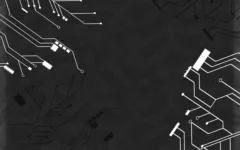Terahertz technology has witnessed significant advancements over the past few decades. An emerging field, terahertz has the potential of improving applications such as passenger scanning at airports, huge digital data transfers, and many others. The frequency of terahertz radiation comes between bandwidths of microwaves and infrared radiation. Terahertz radiations are capable of penetrating easily into numerous materials, including biological tissue. These radiations carry very low energy, posing no risk to objects under investigation.
Increasing Applications of Terahertz Technology Expected to Drive its Market Growth
Owing to technological advancements, imaging systems can now can now access terahertz frequency bands. Several manufacturers are now focusing on development of new devices capable of transmitting and receiving radiations of terahertz frequency range. Terahertz technology is utilised in various field for various applications such as spectroscopy, communication and imaging systems. Increasing applications of terahertz technology across numerous industries for checking quality and monitoring process control is foreseen to drive the demand for terahertz systems and components in the upcoming years.
Future Market insights (FMI), in its report, states that soaring adoption of terahertz technology across industries such as defence & homeland security, aerospace, etc. is expected to fuel the growth of the global terahertz technology market in the near future. In addition, factors such as surging investments in research & development activities, soaring high-end terahertz devices applications in processes such as process control monitoring and research laboratory, and Increasing penetration of terahertz technology across medical science and biology sectors are prominent drivers for the market growth. In contrast factors such as lack of awareness on terahertz technology might result into sluggish adoption, while concerns regarding reliability and accuracy issues are likely to be restrain the market growth.
A Device for Detection of Foreign Bodies in Food Products using Terahertz Technology
New devices are being designed based on terahertz technology. Terahertz radiations are capable of penetrating through various substances and objects, making it possible to discern their internal properties. These sensors developed enable detection of foreign bodies in food products, for e.g. sliced vegetables and meat. These foreign bodies may comprise of glass, plastic, insects, paper, or metals-including the corrosion resistant ones. In addition, these sensors may be utilised for identifying microorganisms, in real time, belonging to main, common pathogen strains, possibly present in perishable foodstuffs, and carrying out microorganism counts. The researchers have designed a device, miniaturised mixture of transmitter & receiver, undertaking radiation detection in the range of terahertz frequency. Spectral signature of substances and objects, according to authors of this research, is quite different between any two cases considered, which makes detection simpler and gives lower false alarms.
Wireless Terahertz Technology to be a Boon for Data Transfer’s Future
Effective wireless communications are expected to gain huge demand with increasing shifts of activities to tablets and smartphones. A new technology has been recently introduced by researchers from Japan’s National Institute of Information and Communications Technology. Panasonic Corporation focuses on achieving this technology in the near future, as it is capable of reaching speeds surpassing 100Gbps in single channel, where comparable speeds are offered to several fibre connections. In this research, a terahertz transmitter sends digital data utilising 300GHz spectrum band- higher frequency than the current 4G and Wi-Fi networks. These typically utilised bands in the range of 800MHz to 4GHz, albeit in-development services of 5G are foreseen to utilise 100GHz. The transmission technology that the Japanese have used claims of delivering 10X power of previous versions, potentially offering ultra-high speed links to the satellites. This technology is expected to be a boon for future of data transfer.
The information presented here is sourced from Future Market Insights latest report. A sample of this report is available upon request.
Author: Abhishek Budholiya is a tech blogger, digital marketing pro, and has contributed to numerous tech magazines. Currently, as a technology and digital branding consultant, he offers his analysis on the tech market research landscape. His forte is analysing the commercial viability of a new breakthrough, a trait you can see in his writing. When he is not ruminating about the tech world, he can be found playing table tennis or hanging out with his friends.








